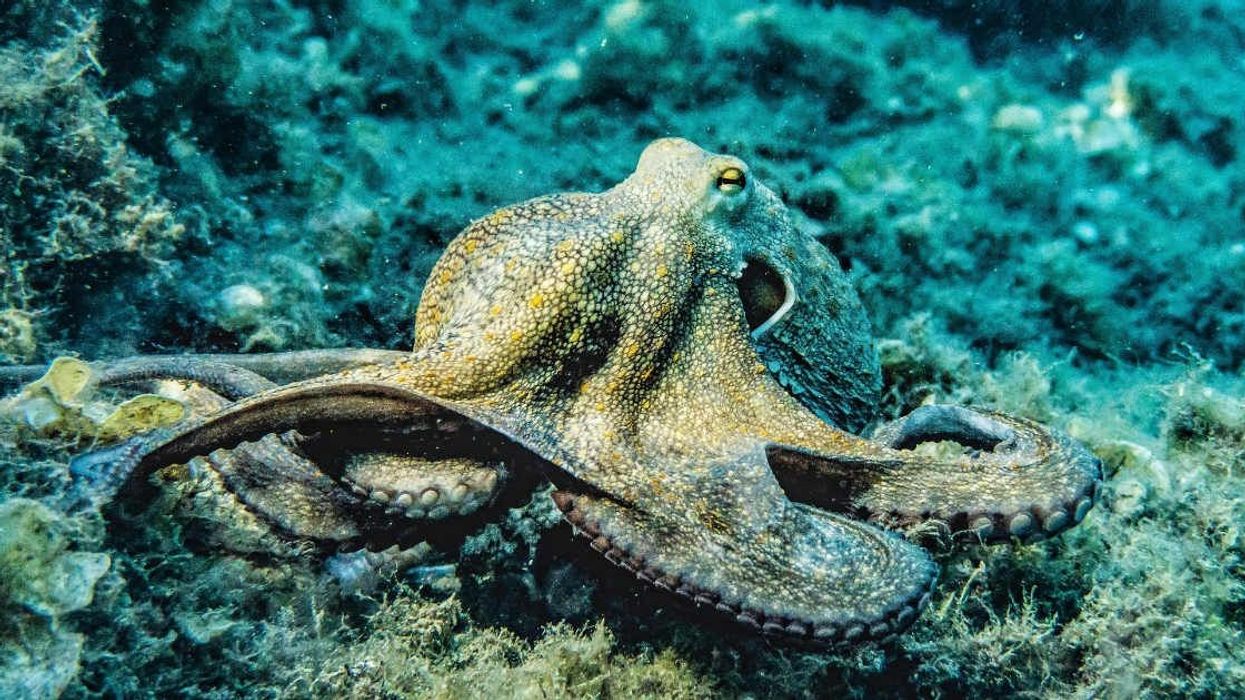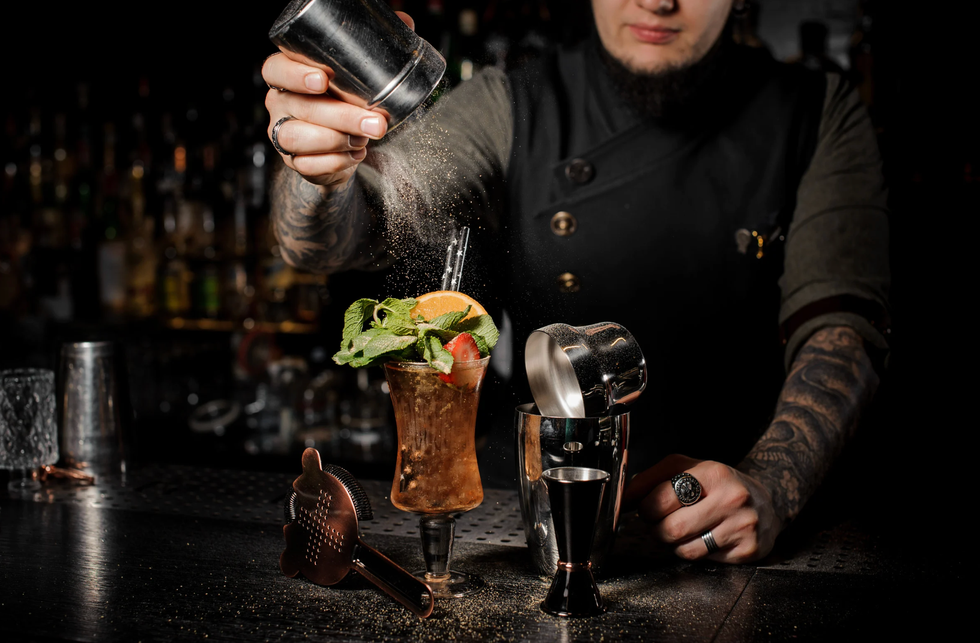At January’s Good Food Awards, an event that honors tasty products as well as socially and environmentally responsible brands, Laura Chenel’s Ash-rinded Buchette earned acclaim in the cheese category. The Sonoma, California, based brand, most famous for its original “small log” soft-ripened chèvre, had enhanced their beloved classic with a coating of vegetable ash.
Vegetable ash is exactly what you think it might be — charred vegetables that are burned down into a thin, fine powder. By no means is this a new food phenomenon. The French have been dusting cheese with vegetable matter for centuries, and in the early 19th century, cheesemakers discovered that incorporating ash into the brining process could fend off insects.
“In the past, ash was used mostly to protect the cheese from contamination,” says Remi Saintz, Laura Chenel’s cheesemaker and production manager. During the aging process—whether it lasted a few days or a few months—cheeses were dusted with ash to safeguard the yield (this was prior to the invention of wax or plastic wraps). The result was a distinct, darkened stripe that ran down the middle of many aged goat cheeses.
“The ash alters the pH surface of the cheese, especially with fresh goat cheeses that are high in acid,” says Janet Fletcher, publisher of the Planet Cheese blog. Essentially, ash alters the taste.
Modern technology has mostly eliminated potential insect invasion in aging processes, but ash is still a common presence in many cheeses. California’s Humboldt Fog (a goat milk cheese), Italy’s Sottocenere (a black truffle-infused cheese, whose name literally translates to “under ash”), and France’s Morbier still honor the tradition of using ash in the cheesemaking process, though it’s now used more for aesthetic purposes than for warding off pests.
For decades, vegetable ash existed solely as a cheesemaker’s secret — until, as rumor has it, famed Nordic chef René Redzepi introduced a shrimp dish with a touch of leek ash in 2009.
The ash trend spread like wildfire. By 2010, vegetable ash was everywhere. It didn’t matter if it was barbecue season or the dead of winter, chefs from around the globe were transforming their kitchen compost into ash crackers and vinaigrettes. Burning everything from leeks to hay, savvy cooks didn’t hold back, marinating, rubbing, and even baking with the stuff. It earned such a reputation that people started packaging it up and selling it online. Case in point, the Cheesemaker imports “Edible Vegetable Ash” from France and charges $7.97 for just two ounces of the stuff. (You could also opt to bulk up and purchase 2.2 pounds for around $90.)
And while charring vegetable matter into edible, albeit indistinct, matter showcases a chef’s undeniable talent, putting ash on the plate is not just about showing off. It has a lot to do with an abundance of product.
“There’s so much accessibility to great produce these days, no matter where you are. In the past, that wasn’t the case,” says Chef David Bazirgan of Bambara in Cambridge, Massachusetts. Alongside the resurgence in local farming, vegetables began to take center stage on many menus. “A lot of local farms are growing some great stuff and everyone is getting on board with that,” Bazirgan says.
Chefs have always been conscious of their compost. Commonly, the kitchen’s leftover vegetable scraps would get thrown into a giant pot for broth; the vegetable ash trend turned chefs on to a new, more creatively challenging, technique. “Everyone likes meat charred, but with vegetables being a star these days it makes sense to try and do as many techniques as possible to continue to be relevant,” Bazirgan adds.
With a heftier amount of veggie scraps available at the end of the night, chefs like Michelin star Redzepi turned to this time-tested practice to enhance their cuisine. Like in cheese, the ash adds a charred complexity—or “vegetable umami” as David Faro, executive chef of San Francisco’s The Alembic calls it—to each bite.
“It adds both texture and taste,” says organic farmer and restaurateur Frank McClelland of Boston’s L’Espalier. McClelland started burning leftover produce on Apple Street Farm as early as 2011, incorporating the ash onto L’Espalier’s menu for dishes like Denver leg of venison with coconut ash glaze.
Chefs are entrepreneurial in nature, so innovation is in their blood. “If I can take all this stuff that’s going to end up in the trash or stockpot and make something that’s going to contribute to the plate, without adding any cost, I’m doing myself a favor,” says Faro. “Zero waste is just part of being a smart chef.”
Faro welcomes the challenge of creating mouth-watering cuisine in a no-waste environment, using his veggie compost to create ash crackers, vinaigrettes, and pasta dough. Faro has even stuffed ash between proteins — a process eerily similar to that of the beloved Morbier or Humboldt Fog.
“We’re living in a world where sustainability is a catchphrase, and people are really trying to pull apart that word to understand what it really means,” Faro adds.
“Sustainability” and “zero waste” might not have been buzzwords in 19th century France, but cheesemakers were on to something. The burned vegetable matter that initially dispelled flies is now a chef’s best friend—adding both unique flavor and a sustainable effort to memorable dishes.

















 Screenshots of the man talking to the camera and with his momTikTok |
Screenshots of the man talking to the camera and with his momTikTok |  Screenshots of the bakery Image Source: TikTok |
Screenshots of the bakery Image Source: TikTok | 
 A woman hands out food to a homeless personCanva
A woman hands out food to a homeless personCanva A female artist in her studioCanva
A female artist in her studioCanva A woman smiling in front of her computerCanva
A woman smiling in front of her computerCanva  A woman holds a cup of coffee while looking outside her windowCanva
A woman holds a cup of coffee while looking outside her windowCanva  A woman flexes her bicepCanva
A woman flexes her bicepCanva  A woman cooking in her kitchenCanva
A woman cooking in her kitchenCanva  Two women console each otherCanva
Two women console each otherCanva  Two women talking to each otherCanva
Two women talking to each otherCanva  Two people having a lively conversationCanva
Two people having a lively conversationCanva  Two women embrace in a hugCanva
Two women embrace in a hugCanva 
 A reddit commentReddit |
A reddit commentReddit |  A Reddit commentReddit |
A Reddit commentReddit |  A Reddit commentReddit |
A Reddit commentReddit |  Stressed-out employee stares at their computerCanva
Stressed-out employee stares at their computerCanva
 Who knows what adventures the bottle had before being discovered.
Who knows what adventures the bottle had before being discovered. 
 Gif of young girl looking at someone suspiciously via
Gif of young girl looking at someone suspiciously via 

 A bartender makes a drinkCanva
A bartender makes a drinkCanva